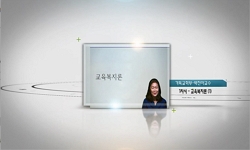The low birth rate and subsequent rapid changes in the population structure have had many ripple effects in various sectors of Korean society. We search for what education policy changes are needed according to this historical phenomenon. First of all...
http://chineseinput.net/에서 pinyin(병음)방식으로 중국어를 변환할 수 있습니다.
변환된 중국어를 복사하여 사용하시면 됩니다.
- 中文 을 입력하시려면 zhongwen을 입력하시고 space를누르시면됩니다.
- 北京 을 입력하시려면 beijing을 입력하시고 space를 누르시면 됩니다.
저출산과 학령인구 급감에 대한 대응 방안: 교육정책을 중심으로 = Low Birth Rate and the Decline of School-age Population: Implications for Education Policy
한글로보기https://www.riss.kr/link?id=A107255951
- 저자
- 발행기관
- 학술지명
- 권호사항
-
발행연도
2020
-
작성언어
-
- 주제어
-
KDC
300
-
자료형태
학술저널
-
수록면
7-38(32쪽)
- 제공처
-
0
상세조회 -
0
다운로드
부가정보
다국어 초록 (Multilingual Abstract)
The low birth rate and subsequent rapid changes in the population structure have had many ripple effects in various sectors of Korean society. We search for what education policy changes are needed according to this historical phenomenon. First of all, we confirm that the heavy burden of education costs is a major factor in the suspension of childbirth for Korean families, and stress the urgent need to reform the education system to reduce private education expenditures. Next, we examine the current status of childcare services in kindergartens and elementary schools and present necessary institutional tasks to move toward universal care. Finally, we confirm that the sharp drop in the school-age population is causing a profound distortion of the national education finance structure and suggests the direction of the reform of the Local Education Finance Subsidy System. In addition, we emphasize the need to expand the government’s finances in line with the universalization of higher education and the expansion of lifelong education services.
동일학술지(권/호) 다른 논문
-
- 텔코경영연구원
- 유경원 ( Kyeongwon Yoo )
- 2020
-
2016 Giving Korea를 활용한 우리나라 개인 기부 실태 분석
- 텔코경영연구원
- 송헌재 ( Heonjae Song )
- 2020
-
FDI 순유입과 금융시장의 발전이 경제성장에 미치는 영향: ASEAN 주요 5개국을 중심으로
- 텔코경영연구원
- 최돈승 ( Don Seung Choi )
- 2020
-
Tariff and Local Content Requirement in the Presence of Duopsonist Intermediate Markets
- 텔코경영연구원
- ( Jung Hur )
- 2020




 KISS
KISS






